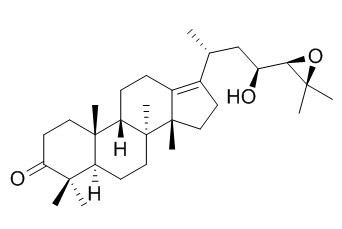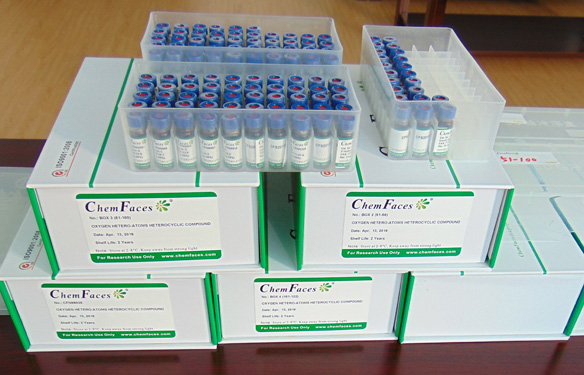Providing storage is as stated on the product vial and the vial is kept tightly sealed, the product can be stored for up to
24 months(2-8C).
Wherever possible, you should prepare and use solutions on the same day. However, if you need to make up stock solutions in advance, we recommend that you store the solution as aliquots in tightly sealed vials at -20C. Generally, these will be useable for up to two weeks. Before use, and prior to opening the vial we recommend that you allow your product to equilibrate to room temperature for at least 1 hour.
Need more advice on solubility, usage and handling? Please email to: service@chemfaces.com
The packaging of the product may have turned upside down during transportation, resulting in the natural compounds adhering to the neck or cap of the vial. take the vial out of its packaging and gently shake to let the compounds fall to the bottom of the vial. for liquid products, centrifuge at 200-500 RPM to gather the liquid at the bottom of the vial. try to avoid loss or contamination during handling.
Chinese Journal of Pharmaceutical Analysis, 2015,35(2):210-217.
Determination of triterpenoids in Rhizoma Alismatis extracts.[Reference:
WebLink]
To establish ultraviolet-visible(UV-Vis)spectrophotometry and HPLC method for determination of triterpenoids in Rhizoma Alismatis extracts.
METHODS AND RESULTS:
With 5% vanillin-acetic acid and perchloric acid as the developer, the colorimetric method was applied.Total triterpenoids in extracts was determined at 555 nm wavelength by UV-Vis spectrophotometry, and 12 triterpenoids was determined by HPLC with Ultimate XB-C18 column(4.6 mm×150 mm, 5 μm)and the mobile phase consisting of acetonitrile-water(5% methanol)at a flow rate of 1.0 mL · min-1.The detection wavelength was set at 208 nm. With 23-acetate alisol B as the standard, the UV-Vis spectrophotometry method was applied.There was a good linear relationship between the concentration and absorbance of 23-acetate alisol B in the range of 5.9-15.6 μg · mL-1 (r=0.999 1);the average recovery rate was 99.05% and the RSD was 2.3%.By HPLC, the linear range of 12 detected compounds were fine(r>0.999 0), the overall recoveries ranged from 95.89%-99.33%, with the RSD ranging from 2.0%-3.4%.The contents of 12 triterpenoids including alisol A, alisol B, alisol C, alisol G, alisol L, 23-acetate-alisol A, 23-acetate-alisol B, 23-a cetate-alisol C, 16-oxo-23-acetate-alisol A, 16-oxo-24-acetate-alisol A, 11-Deoxyalisol B, 24-a cetate-alisol A were 5.71%-5.95%, 3.47%-3.99%, 2.53%- 2.97%, 3.07%-3.93%, 3.65%-3.99%, 2.39%-3.02%, 10.56%-11.32%, 9.44%-9.86%, 0.63% -3.14%, 1.08%-1.21%, 2.29%-2.85% and 4.04%-5.02%, respectively.
CONCLUSIONS:
The two methods are in accordance with the requirements of the methodology validation, indicating that the ultraviolet-visible(UV-Vis)spectrophotometry method can be used for the detection of the total triterpenoids and the HPLC method can be used for detection of 12 triterpenoids.



